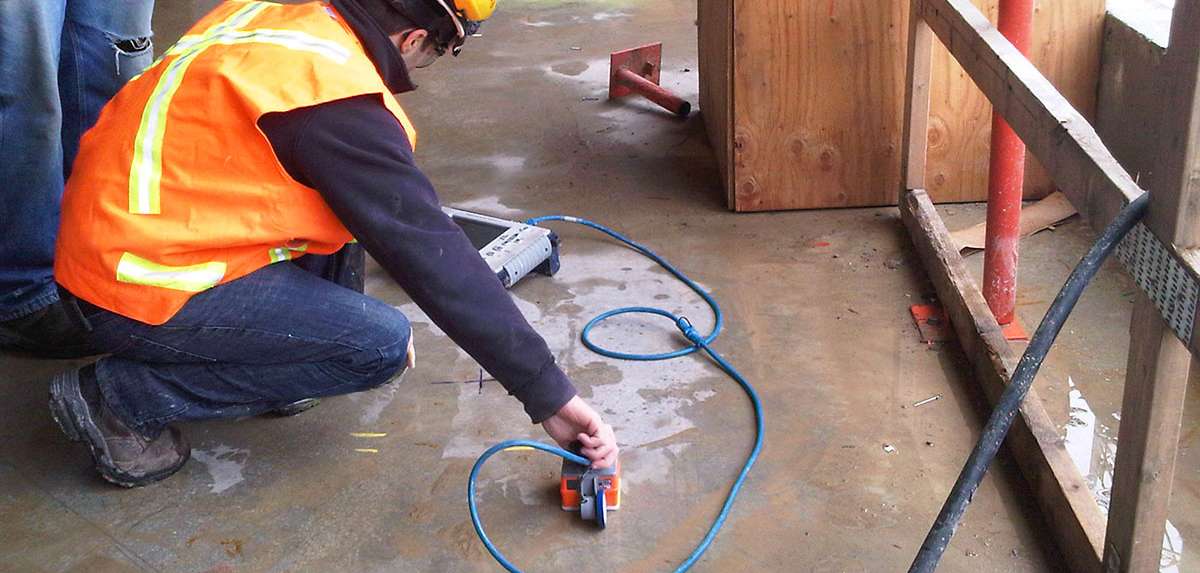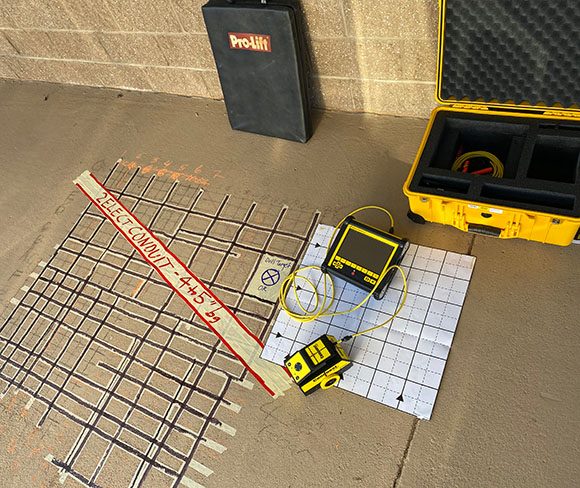Beyond the Surface: Leveraging Advanced Concrete Scanning Techniques for Unmatched Precision and Insight
Advanced concrete scanning methods have actually arised as important tools in this search, offering a peek beneath the surface to introduce a globe of essential insights. By taking advantage of cutting-edge modern technologies, specialists can reveal anomalies, evaluate the problem of concrete structures, and make notified choices that shape the program of jobs.
Importance of Advanced Concrete Scanning
The relevance of making use of innovative concrete scanning methods exists in the unmatched accuracy they use for identifying sub-surface abnormalities and making sure architectural honesty. By utilizing advanced modern technologies such as ground-penetrating radar (GPR), electro-magnetic induction, and progressed sonar imaging, construction specialists can delve beneath the surface of concrete frameworks with a level of accuracy that far goes beyond traditional inspection methods. Concrete Scanning. These techniques enable the recognition of surprise hazards like rebar corrosion, gaps, conduits, or post-tension wires that might endanger the stability and safety and security of a framework over time
Additionally, progressed concrete scanning gives important insights into the overall condition of a concrete component without the demand for invasive procedures, lessening the risk of creating damages throughout the analysis process. The ability to identify the specific location and deepness of possible concerns enables targeted repairs and upkeep, eventually extending the life-span of the framework and maximizing its efficiency. Fundamentally, the significance of sophisticated concrete scanning can not be overemphasized in the world of building and facilities maintenance, where accuracy and integrity are extremely important.
Kinds Of Cutting-Edge Technologies

Anomalies and Issue Detection

In addition to GPR, concrete scanning strategies great post to read like thermography and impact-echo screening are likewise efficient in detecting issues and abnormalities. By leveraging these advanced methods, professionals can proactively address architectural concerns, making certain the longevity and safety of concrete structures.
Assessing Concrete Condition
How can designers properly assess the problem of concrete frameworks to guarantee their longevity and security? Various innovative concrete scanning techniques are used for this objective. Ground-penetrating radar (GPR) is typically made use of to evaluate the inner framework of concrete, discovering spaces, fractures, and various other anomalies that may endanger its toughness.
Incorporating non-destructive testing approaches with aesthetic evaluations allows for a thorough analysis of concrete condition, enabling designers to determine potential problems early on and execute timely maintenance or repair services. By leveraging these advanced methods, designers can make sure the long-lasting toughness and security of concrete structures.
Enhancing Decision-Making Processes
In the world of infrastructure administration, enhancing decision-making processes is crucial for ensuring the efficient upkeep and longevity of concrete frameworks. Improved decision-making procedures in concrete administration involve making use of innovative scanning techniques to gather in-depth information on the problem of structures. By leveraging technologies such as ground-penetrating radar and 3D imaging, stakeholders can make educated choices regarding support, repair work, or substitute methods.
These advanced scanning strategies offer indispensable understandings right into the internal make-up of concrete, identifying possible concerns such as gaps, splits, or corrosion that might not show up on the surface. This degree of detailed info enables positive upkeep preparation, lessening the danger of architectural failures and raising the total lifespan of concrete frameworks.
Furthermore, by integrating digital documents and evaluation tools right into the decision-making process, stakeholders can track the evolution of concrete conditions in time, allowing anticipating maintenance techniques and optimizing source appropriation. Inevitably, the integration of sophisticated concrete scanning techniques boosts decision-making processes by providing unequaled precision, understanding, and efficiency in framework administration.
Conclusion
Finally, progressed concrete scanning techniques supply unmatched precision and understanding in finding anomalies, flaws, and assessing the condition of concrete frameworks. By leveraging innovative modern technologies, decision-making processes can be enhanced, bring about even more effective other and enlightened services for preserving and repairing concrete facilities. These strategies play an essential duty in making certain the safety and security and long life of concrete structures, making them a crucial tool in the field of building and design.
In addition, advanced concrete scanning supplies vital understandings right read this into the overall problem of a concrete component without the requirement for invasive actions, decreasing the threat of triggering damage during the evaluation procedure - Concrete Scanning. An additional ingenious technology is 3D X-ray scanning, which provides thorough pictures of the inner framework of concrete, providing useful info without the demand for harmful testing. In Addition, Concrete Cover Meters are utilized to measure the density of concrete cover over reinforcement bars properly. Boosted decision-making procedures in concrete management include using innovative scanning techniques to collect comprehensive information on the problem of frameworks.In final thought, advanced concrete scanning methods offer unparalleled precision and insight in discovering abnormalities, issues, and evaluating the condition of concrete structures